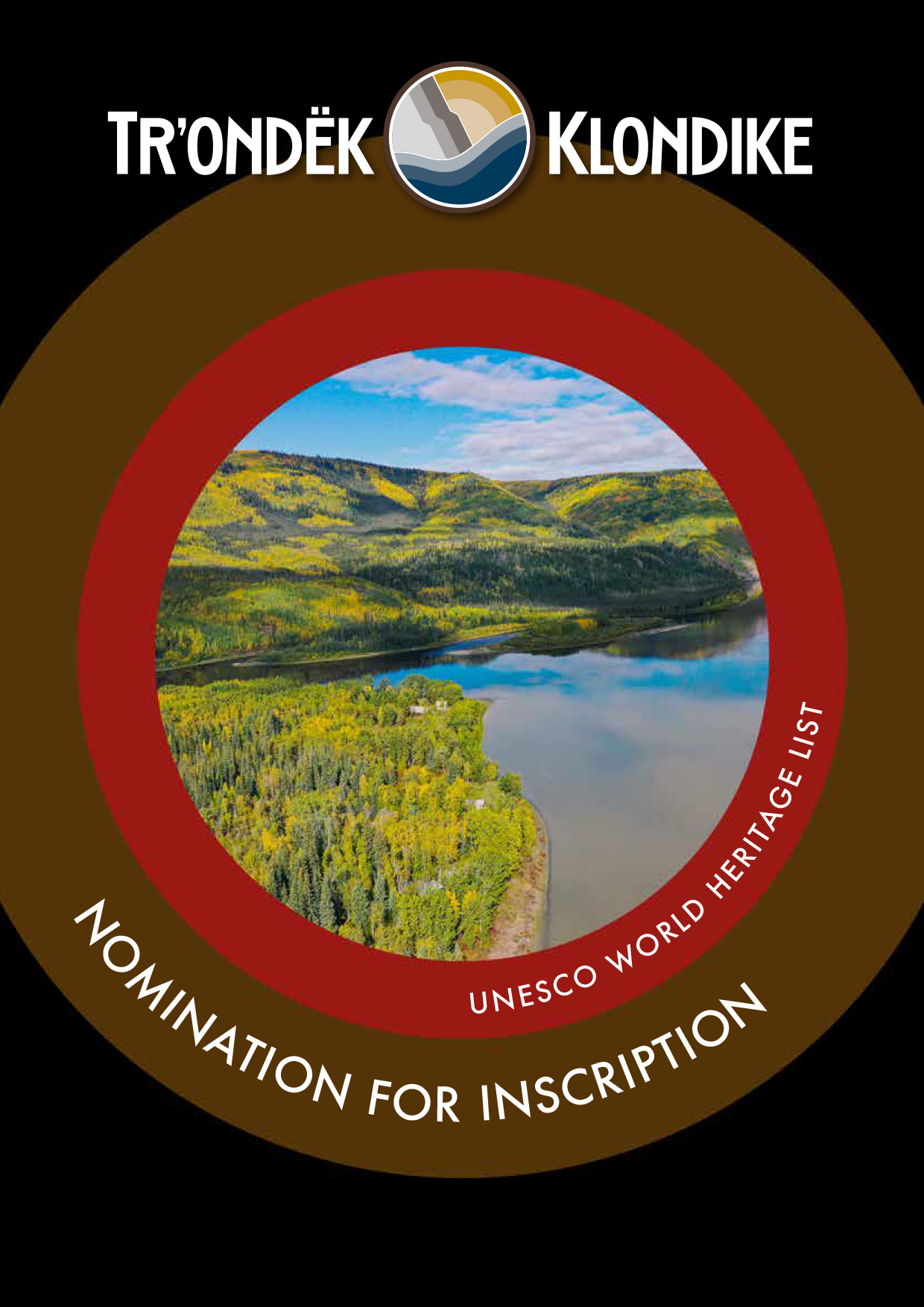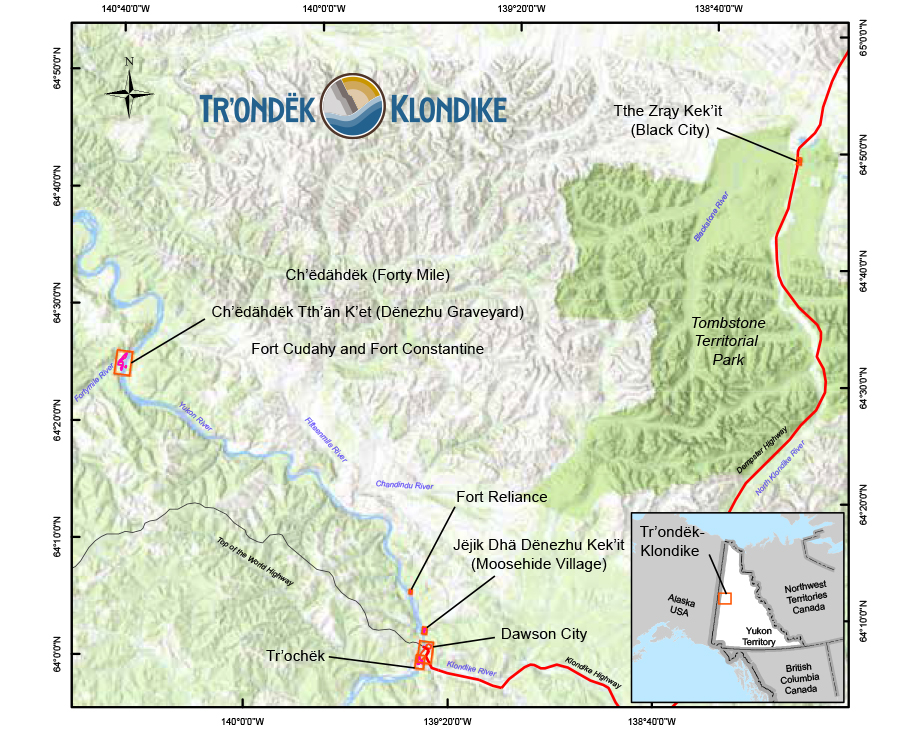The Nomination
The Tr’ondëk-Klondike nomination is a serial property consisting of eight component parts, Fort Reliance; Ch’ëdähdëk (Forty Mile); Ch’ëdähdëk Tth’än K’et (Dënezhu Graveyard); Fort Cudahy and Fort Constantine; Tr’ochëk; Dawson City; Jëjik Dhä Dënezhu Kek’it (Moosehide Village); and Tthe Zra¸y Kek’it (Black City). The component sites tell a story of Tr’ondëk Hwëch’in experiences and responses to colonialism in their homeland between 1874 and 1908.
All of the component sites, except Dawson City, are on Trondëk Hwëch’in settlement lands or co-managed lands (Ch’ëdähdëk (Forty Mile) and Fort Cudahy and Fort Constantine). The sites in Dawson City that contribute to the Outstanding Universal Value are designated or recognized National Historic Sites within the Dawson Historical Complex or are designated Yukon Historic Sites or Municipal Historic Sites.
The nomination dossier of the Tr’ondëk-Klondike serial site was accepted by the World Heritage Centre in March 2021, for evaluation. A panel of experts will review the nomination dossier over the next fourteen months and a decision to inscribe, not inscribe, refer or defer will be made by the World Heritage Committee in 2022.
Click on the cover for the full nomination dossier (14 MB) or you can read the Executive summary.
There are five component sites that have management plans, Ch’ëdähdëk (Forty Mile), Fort Cudahy and Fort Constantine, Tr’ochëk, Dawson City, Jëjik Dhä Dënezhu Kek’it (Moosehide Village). These sites will continue to be guided by these management plans with no additional constraints or changes. The sites that do not have management plans will continue to be managed according to existing legislation (Tr’ondëk Hwëch’in Heritage Act, Tr’ondëk Hwëch’in Lands and Resources Act and the Tr’ondëk Hwëch’in Final Agreement and Self-Government Agreement).
All of the component sites have already had mineral staking rights withdrawn or are on Category A settlement land, identified in the Tr’ondëk Hwëch’in Final Agreement. There are no mining claims located within any of the component sites
Developing the Nomination
It was decided to proceed with developing a new nomination, using research and information from the first nomination as much as possible. This greatly reduced the amount of work in writing and research and made it possible to resubmit the new nomination to the World Heritage Centre by January 2021.
Drafting of the nomination began in the spring of 2020. Contractors visited the component sites and met with technical experts (heritage staff from Tr’ondëk Hwëch’in and Yukon governments). The Outstanding Universal Value was drafted and redrafted with the overriding goal to keep it simple – keep the story true and communicate the values in a way that is easy to understand and relatable.
The draft nomination was sent to World Heritage Centre in September 2020 for a voluntary review – this a technical review to ensure critical information is captured in the nomination. This draft included the OUV, the history and development of the site and information on how Tr’ondëk -Klondike fills a gap in the World Heritage List.
There is no other place in the world that tells the story as completely and has the physical and tangible evidence of an Indigenous Peoples’ experiences and responses to the expansion and consolidation of colonialism. And most significantly, who continue to inhabit their homeland and practice their traditions and culture.
Final writing of chapters occurred between September and December, 2020. The nomination dossier was printed and shipped to the World Heritage Centre in Paris, France by mid-January, 2021.
Funding was provided by Parks Canada, Government of Yukon and Canadian Northern Economic Development Agency (CanNor) with Tr’ondëk Hwëch’in leading the project, providing in-kind support, heritage and cultural knowledge and expertise.


